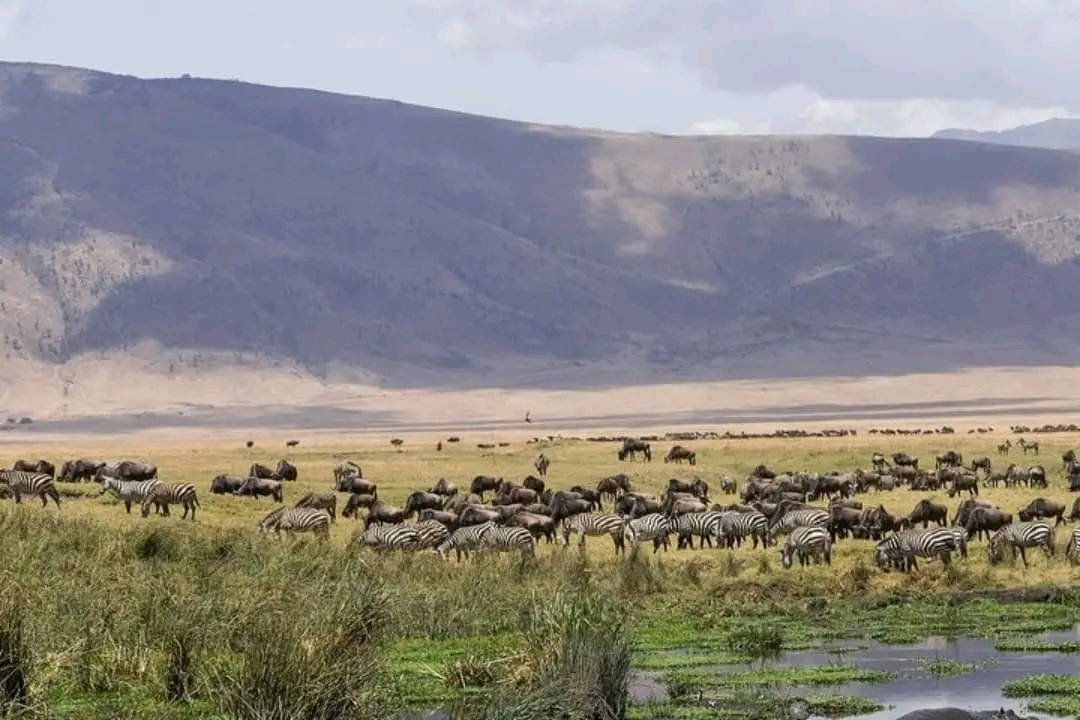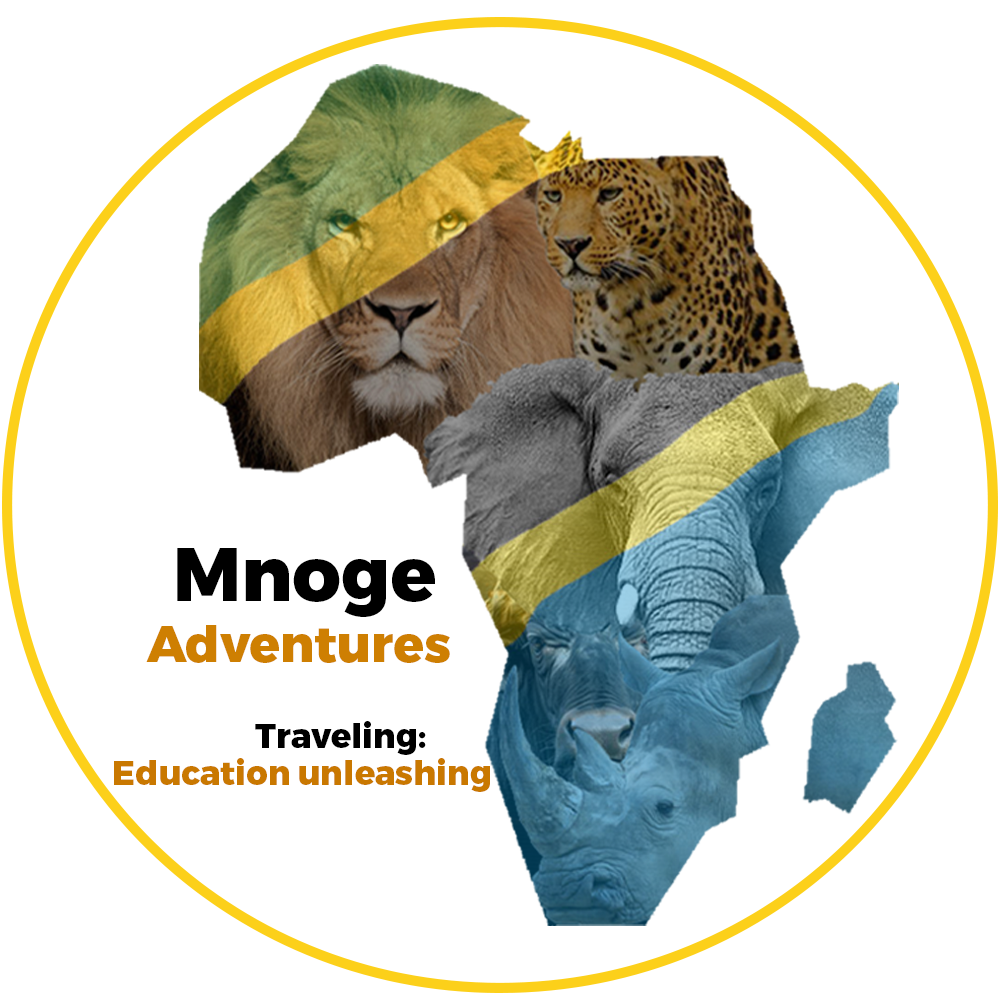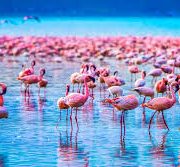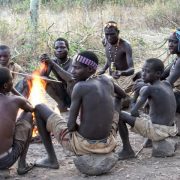
Ngorongoro Crater – Nature’s Greatest Showcase in Tanzania
Nestled within the vast expanse of the Ngorongoro Conservation Area in northern Tanzania lies one of the most breathtaking natural wonders on Earth the Ngorongoro Crater. Often referred to as “Africa’s Garden of Eden,” this spectacular volcanic caldera is a UNESCO World Heritage Site and one of the most iconic safari destinations in the world. Formed around 2 to 3 million years ago, the Ngorongoro Crater is the world’s largest intact, unfilled and inactive volcanic caldera, spanning about 260 square kilometers (100 square miles) and descending over 600 meters (nearly 2,000 feet) deep. The result is a self-contained ecosystem teeming with life an incredible natural amphitheater that offers an unforgettable safari experience.
🐘 A Natural Enclosure for Wildlife
Ngorongoro Crater is home to a dense concentration of wildlife, with an estimated 25,000 large animals residing on its fertile floor year-round. Thanks to the permanent water sources and nutrient-rich volcanic soil, this area sustains a wide variety of species that rarely migrate, making wildlife viewing reliable and rewarding. Visitors can expect to see elephants, buffalos, wildebeests, zebras, gazelles, warthogs and hippos grazing or wallowing in the swamps and grasslands. The crater is also one of the few places in Tanzania where you have a good chance of spotting the critically endangered black rhino in the wild.
🦁 Land of Predators
Ngorongoro Crater has a high predator population, especially lions, hyenas, and jackals. The crater is home to around 60 to 70 lions, and due to the contained environment, they are often easy to find and observe. Hyenas here are particularly bold and form large clans, often seen trailing hunting lions or feasting on carcasses. Leopards, although elusive, can be spotted along the crater rim and in the adjacent forests. Cheetahs are less common but do occasionally venture into the crater from the surrounding plains.
🐦 Birdwatcher’s Paradise
The crater isn’t just a haven for big mammals it also offers incredible birdwatching. Over 500 bird species have been recorded in the area, making it a must-visit destination for bird lovers. Lake Magadi, a shallow alkaline lake at the crater’s center, attracts thousands of flamingos during certain times of the year. Other birds include crested cranes, secretary birds, ostriches, vultures and eagles soaring along the crater rim.
🌳 Varied Landscapes Within the Crater
What makes the Ngorongoro Crater truly unique is its wide variety of landscapes packed into a relatively small area. From open grasslands to acacia forests, swamps and lakes, the diverse habitats support an equally diverse array of wildlife.
-
Lerai Forest, located inside the crater, is an ancient yellow fever tree forest and a great place to find elephants and leopards.
-
Gorigor Swamp is a favorite haunt for hippos and a resting area for many birds and buffalos.
-
The central lake, Lake Magadi, often shimmers with pink hues due to flamingos and is a beautiful photo opportunity.
🛖 Cultural and Historical Significance
The Ngorongoro Conservation Area is unique in that it’s not only a wildlife sanctuary but also a place where humans and wildlife coexist. The Maasai people, traditional pastoralists, live and graze their cattle in the conservation area, preserving centuries-old customs while coexisting with nature. Nearby, the Olduvai Gorge, often called the “Cradle of Mankind,” is one of the most important paleoanthropological sites in the world. It offers insight into early human evolution and is just a short drive from the crater, making it a must-visit for those interested in history and anthropology.
🎯 An Easy Addition to Any Safari
Ngorongoro Crater is part of Tanzania’s famed Northern Safari Circuit, making it a perfect combination with nearby Serengeti, Tarangire, Lake Manyara and Mount Kilimanjaro. Its proximity to the town of Arusha makes it easy to reach and a favorite among first-time safari travelers and seasoned adventurers alike.
🌍 A Journey into a Living Paradise
A visit to the Ngorongoro Crater is like stepping into a wildlife documentary. The close proximity of animals, the stunning landscapes and the feeling of being inside a natural amphitheater all contribute to a sense of awe and wonder. Whether you’re on a family safari, honeymoon, photography trip, or cultural journey, the Ngorongoro Crater delivers unforgettable memories and rare wildlife encounters. Ngorongoro Crater is not just a destination it’s an experience, a lesson in harmony between nature and culture and a true marvel of our planet.
🗓️ Best Time to Visit
The Ngorongoro Crater is accessible year-round, and its wildlife density ensures excellent game viewing at any time:
-
June to October (Dry Season): Great for clear skies, easier wildlife spotting and comfortable travel.
-
November to May (Green Season): The landscape turns lush and green, birdlife increases and there are fewer tourists.
Recent Posts
🌿 Lake Manyara National Park – Tanzania’s Hidden Gem of Biodiversity
Guardians of Ancient Traditions – The Hadzabe Tribe of Tanzania
Tarangire National Park – Tanzania’s Timeless Wilderness
All Categories

Thailand





